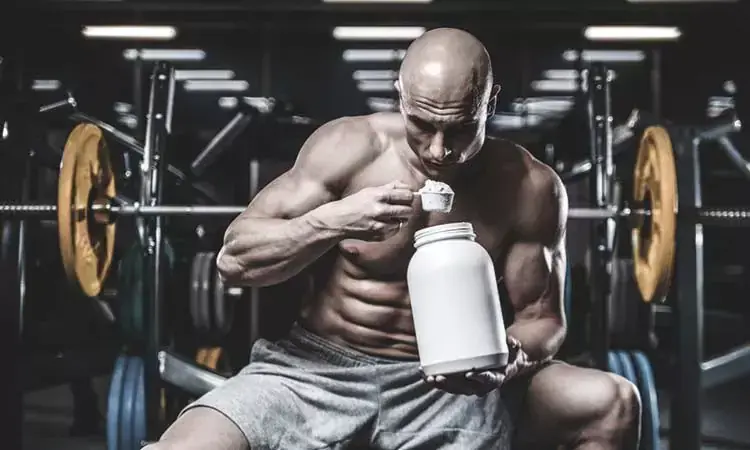Prednisone is a corticosteroid drug that is commonly prescribed for its anti-inflammatory and immunosuppressant properties. In the realm of medicine, it is used to treat an array of conditions, ranging from allergies to autoimmune diseases to asthma. Its potency and effectiveness in reducing inflammation make it a valuable pharmaceutical agent in managing chronic and acute medical issues.
The consideration of prednisone in bodybuilding necessitates a thorough understanding of its hormonal effects, potential risks, side effects, and the importance of appropriate dosage and administration. The realm of professional athletics and bodybuilding is governed by legal and ethical standards that typically prohibit the use of performance-enhancing drugs without a legitimate medical reason. Navigating these considerations is essential for athletes to manage health risks and optimize performance effectively.
However, its use in the bodybuilding industry is a matter of controversy and scrutiny. Bodybuilders may seek out prednisone for its potential to reduce inflammation and expedite recovery from intense physical training. The appeal ostensibly lies in prednisone’s ability to aid in quicker recovery, thereby allowing for more frequent and intensive workouts. Despite this potential application, the use of prednisone in bodybuilding strays from its approved medical purpose and raises significant concerns regarding its safety and legality in sports.
Quick Summary
- Prednisone is used medically for its anti-inflammatory effects but is controversial in bodybuilding.
- Misuse of prednisone can lead to significant health risks and ethical concerns in sports.
- Understanding appropriate use and compliance with legal standards is critical for athlete safety and performance.
Prednisone and Its Uses

Prednisone is a potent corticosteroid used in various medical scenarios, primarily for its anti-inflammatory effects. It’s critical to understand its role in treatment and potential side effects.
Overview of Corticosteroids
Corticosteroids are a class of steroid hormones that are naturally produced in the adrenal cortex of vertebrates. They can be divided into two major groups: glucocorticoids and mineralocorticoids. Prednisone falls into the category of glucocorticoids, which are commonly prescribed to suppress inflammation, reduce immune responses, and aid in metabolism.
- Glucocorticoids: Include prednisone, hydrocortisone, and dexamethasone
- Mineralocorticoids: Includes aldosterone, which regulates salt and water balances
Medical Applications of Prednisone
Prednisone is used to treat an array of autoimmune disorders such as lupus, rheumatoid arthritis, and Crohn’s Disease. It’s also effective against asthma, ulcerative colitis, and is sometimes used in the management of allergic reactions.
- Autoimmune disorders: Conditions where the immune system mistakenly attacks the body
- Asthma and allergies: Prednisone helps to prevent the release of substances in the body that cause inflammation.
Prednisone as an Anti-Inflammatory Agent
As an anti-inflammatory agent, prednisone targets the inflammation in conditions such as autoimmune diseases, where it suppresses the immune system’s overactive response. This helps to alleviate symptoms but can also lead to an increased risk of infection due to the dampened immune responnse.
- Inflammation: Prednisone reduces swelling, redness, and pain.
- Immune System Suppression: Necessary to treat certain autoimmune diseases, but increases susceptibility to infection.
Side Effects of prednisone, especially with long-term use, may include osteoporosis, high blood pressure, and psychological effects.
References
Hormonal Effects of Prednisone

Prednisone, a synthetic corticosteroid, can significantly affect the hormonal balance in the body, influencing various hormone levels.
Impact on Testosterone and Other Hormones
Prednisone can suppress the secretion of testosterone and other androgens by the adrenal glands. The drug may also reduce levels of DHEA, estrogen, and progesterone, leading to hormonal imbalances and potential side effects in bodybuilders who may use it.
- Testosterone: Suppressed levels due to prednisone use.
- DHEA, Estrogen, Progesterone: Potential reductions seen with corticosteroid administration.
Cortisol and Its Effects on the Body
As a corticosteroid, prednisone mimics the effects of cortisol, a hormone involved in the body’s stress response. Enhancing cortisol’s effects can lead to:
- Increased blood sugar levels.
- Reduced effectiveness of the immune system.
- Possible interference with the natural synthesis of Vitamin D.
Relation Between Corticosteroids and Anabolic Steroids
Corticosteroids like prednisone are distinct from anabolic steroids, which are synthetically generated to mimic testosterone and promote muscle growth. While anabolic steroids are favored for muscle mass and strength, corticosteroids have no such benefits and can potentially disrupt hormone levels when misused.
- Corticosteroids vs Anabolic Steroids: Divergent purposes and effects.
- Muscle Growth: Not promoted by corticosteroids, unlike anabolic steroids.
Impact of Prednisone in Bodybuilding

Prednisone is a corticosteroid often prescribed for its anti-inflammatory and immunosuppressive effects. However, its role in bodybuilding is complex, as it has implications on muscle mass and recovery, while contrasting with anabolic-androgenic steroids in its effects on muscle growth.
Muscle Building and Anabolic Properties
Prednisone does not contribute to muscle building in the same way that anabolic-androgenic steroids do. It lacks the anabolic properties that stimulate muscle growth and protein synthesis, key factors in increasing muscle mass. Corticosteroids like prednisone can actually lead to muscle atrophy and weakness if used long-term.
- Anabolic-androgenic steroids (AAS): Enhance muscle growth and strength by increasing protein synthesis and skeletal muscle mass.
- Prednisone: No direct anabolic effects; potential for muscle wasting with prolonged use.
Prednisone’s Role in Muscle Recovery
Prednisone is used in the medical field for its ability to reduce inflammation, a common issue after intense resistance training or lifting exercises. However, within the context of bodybuilding, corticosteroids like prednisone should be approached cautiously as they may interfere with the muscle recovery process.
- Muscle Recovery: Adequate for short-term inflammatory control.
- Long-term effects: Prolonged use can impair healing and lead to muscle breakdown.
Comparison with Anabolic-Androgenic Steroids
When comparing prednisone with anabolic steroids, it’s clear that the latter are specifically designed to enhance muscle-building and performance.
- Anabolic Steroids: Targeted towards increasing muscle mass and improving exercise performance.
- Prednisone: Primarily for medical use; undesirable for bodybuilding due to potential muscle wasting and atrophy.
References
Risks and Side Effects of Prednisone Use

While prednisone can be beneficial for certain medical conditions, it carries a significant risk of side effects, including weight gain and mood changes. Bodybuilders should be particularly cautious due to the potential for long-term health issues and specific risks related to muscle development.
Common Adverse Reactions
Prednisone may cause a range of common side effects that can affect users:
- Weight gain
- High blood pressure (hypertension)
- Increased blood sugar levels, potentially leading to diabetes
- Fluctuations in blood cholesterol
- Fluid retention
- Mood changes, including irritability and aggression (commonly referred to as “roid rage”)
- Acne and other skin issues
- Visible changes like hirsutism in women and gynecomastia in men
- Irregular menstruation in women
- Muscle weakness and fatigue
Long-Term Health Complications
The prolonged use of prednisone can lead to more severe health problems:
- Osteoporosis, an increase in bone fragility
- Tendon rupture
- Potential kidney problems due to chronic strain
- Increased risk of infections due to immune suppression
Specific Risks for Bodybuilders
Bodybuilders taking prednisone might face unique risks:
- Fluid retention can obscure muscle definition.
- Although prednisone can cause muscle weakness, bodybuilders may not initially notice this due to continued training.
- Tendon rupture can occur from the combination of weakened tendons and heavy lifting.
- Ultimately, prednisone can have counterproductive effects on bodybuilding goals, like invisible muscle weakness that impacts performance.
Dosage and Administration of Prednisone

In the context of bodybuilding, the use of prednisone, a synthetic glucocorticoid, is uncommon and typically limited to therapeutic applications rather than performance enhancement. Dosage and administration should be overseen by a healthcare provider to ensure safe use.
Proper Use and Prescription Guidelines
Prednisone should only be used when prescribed by a healthcare professional. The dosage is highly individualized based on the condition being treated, ranging from low doses for anti-inflammatory action to higher doses for immunosuppression. The prescription will specify the exact dosage, which must be followed precisely to avoid adverse effects.
Methods of Prednisone Delivery
Prednisone is available in several forms, including pill, liquid, and injection. Oral administration is most common, providing a systemic effect. For acute conditions, intravenous (IV) administration may be warranted. Rarely, a nasal spray or local injection may be used for targeted therapy.
The Weaning Process: Tapering Off Prednisone
Tapering off prednisone is essential to allow the body’s natural corticosteroid production to resume and prevent withdrawal symptoms. The taper should be gradual and guided by a healthcare provider, typically reducing the dose over days or weeks.
References
Legal and Ethical Considerations

The use of prednisone in bodybuilding intersects with stringent doping regulations and poses ethical questions regarding its use among professionals. It is vital to understand the frameworks governing its legality in sports and the implications of its use.
Doping Regulations and Sport Policies
Doping in sports is governed by various organizations, each with their specific regulations. The National Football League (NFL), for instance, includes steroids in its list of banned substances. The NFL‘s policy prohibits players from using performance-enhancing drugs (PEDs), and violators face suspension and other penalties. Prednisone, a corticosteroid, is an exception in cases where it’s prescribed for legitimate medical conditions but still requires approval from league doctors. The World Anti-Doping Agency (WADA) also regulates the use of substances among athletes, maintaining a strict code to ensure fair competition.
| Agency | Substance Classification | Approval Required for Medical Use |
|---|---|---|
| National Football League (NFL) | Steroids (PEDs) – Banned | Yes (League Doctors) |
| World Anti-Doping Agency (WADA) | Corticosteroids – Restricted in-competition | Yes (Therapeutic Use Exemption) |
Use of Prednisone Among Professional Athletes
The National Institutes of Health acknowledge the therapeutic benefits of prednisone for inflammatory and autoimmune conditions. However, in bodybuilding, its potential benefits must be weighed against the health risks such as testicle atrophy due maintenance of sustained corticosteroid levels. Furthermore, the ethics surrounding its use are contentious because prednisone can afford an unfair advantage and thus be considered a form of doping. In professional sports, abuse of such substances can tarnish an athlete‘s reputation and the integrity of the sport.
- Health Risks: Atrophy of testicles, hormonal imbalance
- Ethical Rispects: Unfair advantage, potential for abuse
References
- World Anti-Doping Agency Prohibited List: WADA Prohibited List
- National Institutes of Health on Prednisone: NIH Prednisone Information
Managing Health and Maximizing Performance

When considering alternatives to Prednisone for muscle gain, bodybuilders should focus on long-term health and performance. This requires an approach that encompasses proper nutrition and workout regimens.
Healthy Alternatives to Prednisone for Muscle Gain
Bodybuilders may seek non-steroidal methods to increase muscle mass. Natural supplements, including omega-3 fatty acids, can aid in muscle recovery and inflammation reduction. Branched-chain amino acids (BCAAs), when taken in conjunction with resistance exercise, can also foster muscle synthesis. Resistance training is a cornerstone for muscle development, improving muscle strength and size without the need for steroids.
- Omega-3s
- BCAAs
- Resistance Training
Dietary and Training Tips for Bodybuilders
A bodybuilder’s diet should be rich in lean proteins, complex carbohydrates, and healthy fats to provide the necessary energy and building blocks for muscle growth. Carbohydrate intake is vital for maintaining muscle glycogen stores, leading to improved performance and reduced protein loss during workouts.
- Lean Proteins: Chicken, turkey, paneer, legumes
- Complex Carbohydrates: Sweet potatoes, brown rice, quinoa
- Healthy Fats: Avocado, nuts, seeds, olive oil
Hydration is also critical; it not only affects muscle performance but also helps in regulating blood pressure and glucose levels – both areas of concern when steroids like Prednisone are misused. Sleep and proper rest are indispensable for muscle repair and managing inflammation. Aiming for 7-9 hours of restful sleep can alleviate problems with anxiety and depression that are associated with intensive training and steroid abuse.
Exercise routines should include a mix of cardiovascular workouts (like walking or cycling) and weight training to optimize overall health, combat obesity, and prevent conditions that could stem from a sedentary lifestyle.
- Cardiovascular Workouts: Walking, cycling
- Weight Training: Free weights, machines
Bodybuilders should also recognize that psychological factors, including the perception of pain and the placebo effect, can influence their training outcomes. Strategies such as meditation and mindfulness may reduce anxiety, enhancing overall well-being and performance.
Frequently Asked Questions

What are the effects of prednisone on muscle growth and strength?
Prednisone is primarily a corticosteroid, which can have catabolic effects leading to muscle breakdown rather than muscle growth. Its use is generally not associated with increased muscle strength or mass, as it may cause protein degradation in muscles.
Can prednisone be used effectively for muscle injury recovery?
While prednisone can reduce inflammation and pain, it is not typically used for muscle injury recovery in bodybuilding due to its potential to impede healing and muscle regeneration.
How can prednisone influence recovery times post-workout?
By reducing inflammation, prednisone might seem to offer faster recovery post-workout. However, it can also slow down the repair process of damaged muscle tissues, potentially extending overall recovery time.
Is there a link between prednisone usage and muscle atrophy or weakness?
Long-term use of prednisone may lead to muscle atrophy and weakness, a consequence of its catabolic effects that result in the breakdown of muscle protein.
What are the differences between prednisone and anabolic steroids in terms of muscle development?
Anabolic steroids promote muscle growth through anabolic pathways, which is the opposite of prednisone’s catabolic effects. Prednisone does not contribute to anabolic muscle development like anabolic steroids do.
Is it safe to engage in weightlifting or resistance training while on a course of prednisone?
Engaging in weightlifting or resistance training while on prednisone should be approached with caution. Prednisone can increase the risk of injury due to potential muscle weakness and may affect joint stability.
References
- Mayo Clinic – Prednisone and other corticosteroids: Balance the risks and benefits. https://www.mayoclinic.org/steroids/art-20045692
- National Center for Biotechnology Information – Prednisone therapy: emerging safety concerns. https://www.ncbi.nlm.nih.gov/pmc/articles/PMC5048497/
- World Anti-Doping Agency – The prohibited list. https://www.wada-ama.org/en/content/what-is-prohibited
- Mayo Clinic Staff. (2019). Prednisone and other corticosteroids. Mayo Clinic. Retrieved from https://www.mayoclinic.org/steroids/art-20045692
Dr. Grant Fourie, a specialist in male hormones, is based in Cape Town, South Africa. He provides comprehensive treatments for conditions related to low testosterone, such as erectile dysfunction, fatigue, and mood changes. His methods include hormone replacement therapy and other modern treatment options.
Contact me via email or phone to book personal appointment in my clinic: The Village Square, Cape Town - South Africa



